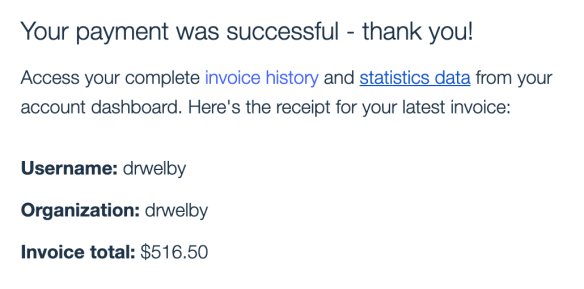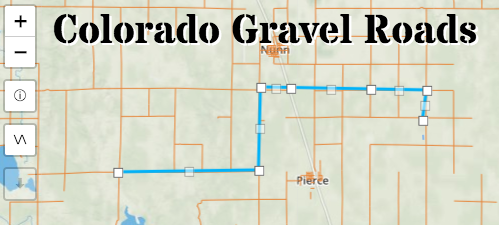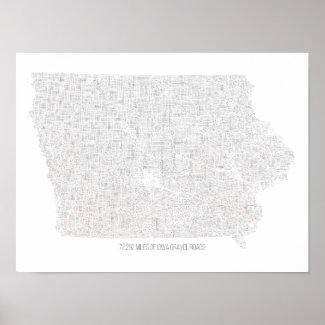Last weekend was this year’s running of Odin’s Revenge, the 180 mile gravel race held out in Gothenburg, Nebraska. Last year I managed to finish with respectable results, but I made a lot of rookie mistakes. This year I was going to ride it smarter.
First change was to carry less water. Last year I carried two large bottles plus a big water bladder in a frame bag. With the aid stations I never really touched the bladder. So that extra weight was going to go.
Second change was better calorie management. Previously I was just eating at a set interval, but I wasn’t keeping track of calories. I also didn’t have much variety in what I had. I ended up feeling bonky in the first half, and didn’t feel better until the last 20 miles of the race when the lunch I choked down finally kicked in. This year I had a good selection of bars and treats, and I had been experimenting with a concentrated mix of maltodextrin, whey protein, and sugar. I had mapped out a schedule of eating and drinking to make sure I would get enough calories. I was shooting for about 300 calories per hour, with 100 calories coming from something solid and the rest from my liquid mix.
Third change was better pacing. I went too hard last year in the middle of the course. My solution, possibly a stupid one, was to ride the course on a single speed. This would force me not to push hard at higher speeds, though at the expense of tougher climbing. Despite being in Nebraska Odin’s is not a flat course. Years of single speed riding would hopefully make it work out.
Training this year wasn’t much better than last year. June was a busy and stressful month, but I had a couple of promising rides – an 80 miler where I pushed the last 20 miles hard and a 50 miler where I got home and didn’t feel tired at all. There was a couple of good singlespeed mountain bike rides to get the legs ready and I planned to add a little speed skating during the last weeks of July.
If you note the date, you’ll see probably my dumbest mistake in this year’s race. Mid-June my wife says to me “I can’t believe that race is only two weeks away, are you ready for it?” Doh! I forgot the organizers moved it up a month to the end of June. So much for extending the training miles. Would brains make up for brawn?
Other than that, everything else seemed to be going well. The new bike was working well for me. My nutrition experiments were agreeing with my body. We made it to Gothenberg without any major problems with time to spare. Everything under my control was going more or less to plan.
Then Odin got his revenge. Friday night had two big bands of thunderstorms dump several inches of rain onto the area. Rolling over to the start Saturday morning things looked a little damp. But the soil seemed to be soaking up the water and I figured a little bit of sun would dry it out quickly.
The race started out at a mellow pace. I think no one was in hurry to face the conditions. Turning left on to the first gravel road, we found things a little soft, but not too bad. The road base had enough sand and gravel to keep things from being sticky, but there were definitely soft spots where you could sink in a couple inches. There was also a noticeable headwind, already!
After about a mile of gravel road I started to feel some weird feedback coming my drivetrain. With a singlespeed there wasn’t really much to go wrong, so it had to be something else. Looking down I noticed my rear tire was looking soft, but it was hard to tell since we were riding on a soft surface to begin with. A few minutes later I could get my rim to bottom out, so I pulled over to add some air. Off to a good start! I had barely started and now I was in last place. At least I could ride by myself at my own pace, I guess.
Continuing on I caught a few riders, making jokes that the slower you went the more time the road ahead of you had to dry out. My tire went flat again, so I stopped to pump it up, hoping the sealant would kick in. My bike was already muddy enough that I didn’t want to have to change the tube. It would take two more stops to add air to finally get the tire to stay inflated.
Working my way up the field I passed the first of many riders pulled over with drivetrain troubles. The mud was causing rear derailleurs to eat themselves up. Riding a singlespeed seemed like a lucky decision.
The gravel roads weren’t too mucky, but the B-roads were another story. The silty soil varied from peanut butter to chocolate pudding to greased blackboard. Some of the early summer thunderstorms had created major erosion, and the steeper downhills had ruts that were more than wheel deep in places. They were super sketchy on my treadless tires, but at least they weren’t picking up much mud, plus my bike has clearance for 29er tires so I didn’t have too much difficult with the mud clogging up in the frame. I admit to feeling some shadenfreude seeing people with carbon wunderbikes with aero wheels and aerobars reduced to carrying their clogged up bikes like a pack mule.
I kept passing riders. Some were stalled out with clogged frames, some were trying to salvage destroyed derailleurs, others were walking down the slick downhills. At the top of one B-road I came upon a big group of riders, and I heard some discussion about bailing out because there was no way they expected to make the 8 hour time limit to the halfway point. I pressed on, and noticed something funny – there weren’t that many tire tracks in front of me. With them weaving back and forth, I couldn’t get an exact point but it was less than ten. Wild, not too far back I was dead last.
I didn’t see to many riders for a while, and then after passing a female rider (Sarah Cooper) on a downhill I noticed there were only four tracks of bikes ahead of me. Odin’s always has a high attrition rate, but this was crazy. I really never expected to be in 5th. There was one question that nagged me – where were the other singlespeeders? Was I actually leading the singlespeed class too? That would mean extra pressure to finish.
Conditions continued to suck. At one point the road was completely flooded. In some sections the mud was so sticky the only way to ride was to try to float on some of the vegetation on the side of the road, which was full of the little yellow blossoms I recognized as goathead thorns. In other places walking was the only option. Even the downhills were slow, and being able to go fast on the downhills was part of my strategy for singlespeed survival. The morning winds were getting stronger too.
Getting closer to the first checkpoint Sarah Cooper passed me back on a hilly section. I took a look at my food situation I noticed that while I was about on pace for time, since I was going so slow and working so hard I was going through more calories than planned for the distance. I was 3/4 of the way through my energy drink, and that was supposed to get me to the halfway point. I had a bottle of Ensure Plus in my handlebar bag so I decided I would drink that at the first checkpoint and I could always buy another one when we got to the next checkpoint in the town of Curtis.
Rolling into the first checkpoint I found the other singlespeeder and Sarah Cooper there. We were informed that the deadline to make it to the halfway point had been extended to 10 hours. Sarah left the checkpoint first, while I filled up my bottles, chugged the Ensure, and had some grapes which were mighty good at this point. I left next, and 10 minutes after leaving I realized I got distracted and forgot to fill one of my three bottles. It was a dumb mistake, but there was water available in about 20 miles so I didn’t need to turn back. The wind had picked up a little, which was good since it was helping to dry out the roads. The catch is that it seemed to be universally a headwind. It was almost a sick joke – any time you were coming up to a turn, you could figure out which direction to go by picking the direction that was more into the wind. In a fair and just world this headwind would mean a tailwind on the way back, but I had no idea what the wind patterns were out here.
The day was warming up too, which was also helping with the roads, but I seemed to be going through a lot of water. Every now and then I would get within sight of Sarah. I was almost out of water by the time I got to the water stop so I filled up and drank the can of V8 I kept for tasty electrolytes. I was really feeling the miles now after 8 hours of slogging. Somewhere around 80 miles I hit a drift of goatheads. I scraped them out with my shoe and it seemed like the tire was holding air.
After nine and a quarter hours I rolled into Curtis. Up ahead was Sarah again, pulling out of the checkpoint. I got my next set of cards and laid down in the shade for a few minutes. Then I headed to the convenience store to try to get some calories. The other fast dudes, Matt Gersib, Jim Cummings, and one other guy were there. It was strange being in such accomplished company. I drank a Pepsi hoping some sugar would kick start my appetite, but nothing there looked appealing in the least.
I took stock of the situation. I had already ridden for over nine hours and was feeling it. But was in at least the top five and was leading the singlespeed class (or at least the registered singlespeeders, since one rider in the lead group had destroyed his rear derailleur and had made an emergency conversion. Maybe with a nap my appetite would come back. The rest of the course would probably have a tailwind. But on the other hand, the rest of the course didn’t pass through any towns, and if I bailed in the middle of nowhere it might be tough to get picked up. Also doing the math, it seemed quite probable that I wouldn’t make it back until after sundown, and I wasn’t carrying a good headlight. I decided to go back to the park and lie down for a bit. But when I went back to my bike the front tire was almost totally flat. So at that point I decided maybe that was a sign. I had already done far better than expected and the smart thing to do was call it a year.
In the end, Sarah Cooper won the overall. Only six riders finished the course, the last one arriving after 21 hours on the bike. I was 9th with a DNF.
Bike and gear:
I ran a 40-18 gear. Chain was lubed with chainsaw bar oil and it survived the conditions. Though I run cantilever brakes I didn’t regret it, since the frame has good clearance and the Resist Nomad 45’s don’t have any tread to clog up. None of my other parts are worth talking about. My wired computer was running slightly ahead of the cue cards, even though I calibrated it against a GPS. The handlebar bag was great but still has some room for improvement in its mounting system. I should have thrown my mini pump in the bag to keep it cleaner.
Food and water:
On the bike I had two standard bottles of water and one large bottle with 600 calories worth of maltodextrin-based DIY energy drink. I had another baggie of drink mix for the second half of the race. Three Payday bars, six bona-fide energy bars of various brands, and a back of Clif Bloks. One bottle of Ensure Plus and one can of V8. For real food, a small peanut butter and jelly sandwich on sourdough bread.
Next year:
I’ll bring a better headlight. I also need to play around with “sticker flickers” to yank out goatheads before the dig in, though they might be a bad idea when it’s muddy. Train more if possible. Make a new bag with minor tweaks and a lower trail fork to match. And build that titanium seatpost I was planning to make in time for the race. That’s about it.
The singlespeed question:
I’ll probably try it again. My arms were getting tired from climbing out of the saddle, but I think more mountain biking would take care of that. What surprised me was how tired my hamstrings were from all the walking and pushing. The mud didn’t help. It’s hard to judge properly since the conditions were so extreme.





